US election: media weapons / USA
Power Stations
‘Magic walls’ and ‘QVR’ are in the lexicon this year for TV anchors covering the US election. Monocle looks at the networks’ top 10 secret weapons in the battle to report the winners and losers of the big day.
There is a gadget on my TV remote that can put all the main news channels on the screen at once. It could become a game show from my front room. Starter for 10: which swing state threw the country into a terminal tizzy eight years ago? Wolf Blitzer, Team CNN. Yes, Florida is the correct answer. Which candidate, Barack Obama or John McCain, is going to win? Don’t all buzz at once.
On election night, American channels are a bit shy about predicting the result, thanks to memories of 2000, when Florida was projected for Bush/Cheney, and then wasn’t, and then was… and so on. The networks were accused of almost winning the election for Al Gore by moving too fast to put key states, including Florida, in his column, when millions on the West Coast were yet to vote.
The differing time zones are only one of the reasons why covering an American election night is a complicated task. Not influencing how people vote in California by trumpeting early results from the east is a real concern. It was faulty exit polling that encouraged them to call Florida too quickly eight years ago. They are afraid of exit polls now. Then there is the small matter of the electoral college. A candidate can win the popular vote (as Gore did in 2000) and still lose the election, because it is how individual states stack up that actually matters. The bigger the state, the more electoral college votes are at stake. Oh, but the temptations in 2008! History, history, everywhere. McCain wins and Alaska’s Sarah Palin makes history. Obama wins, and the same thing happens. It was a very, very long road – and most of the time, very, very close. Moreover, the competition between the news channels – the four big networks and the main 24-hour cable news channels – has been more intense than ever. Predict the winner and get it wrong, and you will be cast into the wilderness forever. Getting it right is the brass ring – if, and only if, one of the other networks doesn’t get there first.
Gaping at the Battenburg of choices on my screen, I am at a loss over which channel to select. So many crusty veterans of American election nights are gone this time round. No Dan Rather (retired) or Peter Jennings or Tim Russert (both deceased too soon). Tom Brokaw was meant to have gone fishing, but has been dragged back on the set by NBC. Regrettably, I have to pass on settling for Katie Couric at CBS. Wolf Blitzer is glued as usual to the anchor chair at CNN, talking like an automaton. (Can’t they afford someone to help?) At ABC, Charles Gibson is all wise and avuncular. But it’s tough to choose which box to click on. Which news source gets it right? Whose panel says things that are actually smart?
For an instant, I am tempted to boycott every one of them. Increasingly comprehensive political websites give live coverage, notably politico.com and the Huffington Post. Anyway, why should we feed those already exploding television egos? If you had been to either of the conventions this summer, you would have seen the royal treatment accorded to the American anchors. What have they done to deserve such adoration? What they have not done, most of the time, is challenge the candidates the way they should have been challenged. Who called out McCain for the lies he told about Obama? And who made any serious effort to knock Obama from his self- regarding perch?
It is old-hat to complain that the US media treats its leaders with far too much deference, but the principle still applies. It is especially egregious during a presidential contest, the argument goes, because unlike prime ministers, presidents are also the head of state. So reporters can’t be too aggressive. Which is daft. On the positive side, it is only because mainstream news reporting in the US is so supine that we have the pleasure of the boom in satirical faux-news shows, like The Daily Show with Jon Stewart on Comedy Central. Then I remember the other televisual alternative to the American outlets on the election night – the world news bulletin on BBC America, anchored by Matt Frei. Maybe more people should watch it in the future.





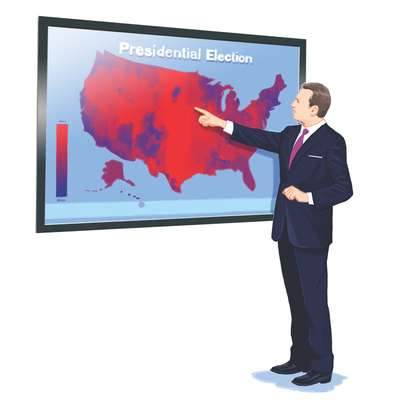
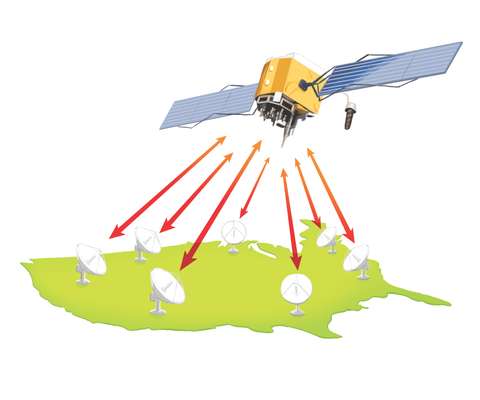
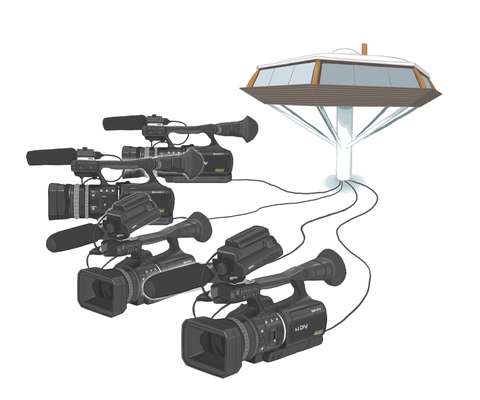
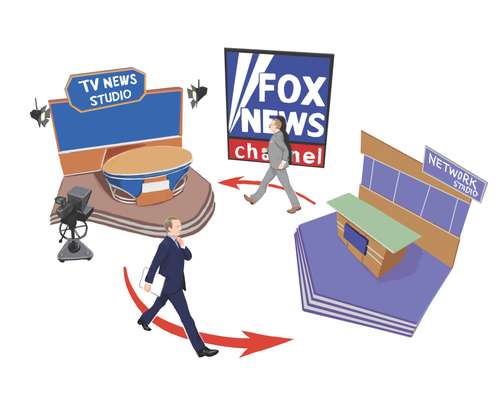
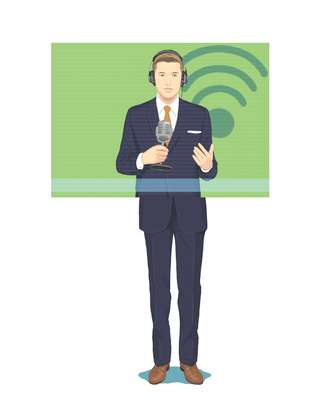
01 The anchors
Cable networks face off
MSNBC kicked off election season with opinionated talkshow hosts Keith Olbermann and Chris Matthews anchoring the primaries and the national conventions. However, on-air feuds and accusations of bias put an end to the experiment. They were then replaced by David Gregory’s straight-up journalism. Though the NBC White House correspondent has been known to bust a few impromptu dance moves, and does a mean Bush impression, there’s no doubt his gravitas suits the main event. His experience (he covered both the 2000 and 2004 elections) matched with his hard-nosed reporting make him a perfect choice against ABC’s tired network anchors such as Charles Gibson, rookie Katie Couric on CBS, and opinionated coverage from Fox News’s Brit Hume and CNN’s Wolf Blitzer.
02 The satirists
Comedy night
The Daily Show’s Jon Stewart claims that his is not a news show, and that he should not be considered a journalist. Yet, he made fourth place in a Pew survey of the journalists Americans most admired. High weekly ratings for both of Comedy Central’s satirical news shows – up to 1.8 million for The Daily Show and 1.3 million for Colbert Report, compared to around 1.2 million for CNN’s Election Center – bolsters the idea that an increasing number of US viewers would rather get news from a comedian than a journalist. Hence a live, hour-long election night special by Stewart with conservative compere, Stephen Colbert.
03 Mobile crews
Keeping up the pace
As stories of voter irregularities and too-close-to-call races emerge, mobility and speed are key. In an effort to cover breaking news fast and first, Fox News deploys a small fleet of Quick Response Vehicles.
These QRVs, customised Ford Excursions and Ford Expeditions, first introduced on the primary campaign trail, are retrofitted SUVs that can do live broadcasts while the van is moving and are equipped with a rooftop camera, a dashboard camera and a roaming camera that can be used away from the van for up to a quarter of a mile. The vehicles are much faster and less expensive than a traditional satellite van. They are equipped with RaySat antennas that stream about 725-750 kb/sec, via an IP-based, high-speed satellite connection. This means a stable signal even when on the move.
04 Info-graphics
Tickers and boxes
Since its launch in 1996, Fox News has placed special importance on visual presentation and on election night, the channel pulls out all the stops. “The graphics are all getting a brand-new look and design,” says Thom Bird, Fox’s executive producer of special events. “Our election ticker at the bottom of the screen is undergoing a facelift and we have added more elements and information to that.”
The trademark “news as bullet points” look has been updated, changed and enhanced by Fox’s in-house graphic designers. As well as brand-spanking-new patriotically coloured graphics, a tweaked version of the stirring opening music used during the primary season of its primetime show, America’s Election HQ, is a distinct touch.
05 Online
The blog standard
“On Election Night, we follow the sage advice of the late, great Molly Ivins and ‘dance with them what brung you’,” says Arianna Huffington, co-founder of online agenda setter The Huffington Post about how it tackles the big night. Of course, that means continuing to provide viewers with its trademark mix of breaking news, videos and real-time commentary. HuffPost’s unique stable of one-off and regular bloggers is its major strength. Everyone from Mahmoud Abbas to Nancy Pelosi to Barbra Streisand has chimed in and Huffington promises that a few new exciting faces will be joining the regulars on election night. “It’s a blend we’ve been honing all campaign season; one that allows us to be a one-stop-election-night-shop,” says Huffington.
06 Maps
The art of breaking down
In an election as complicated and vast as an American one, maps play a key role in breaking down which states were won by who and why. While public broadcasting uses online interactive maps, CNN and Fox News invested in the latest screen technology. At the touch, poke or wave of a finger, the screen zooms in on several states and counties at once, while also revealing pie charts and statistics – think iPhone meets Minority Report.
CNN was the first to acquire what is known as the Magic Wall and now owns two. Jeff Han, who started marketing the device in 2006 through his company, Perceptive Pixel, invented the technology. Of course, it would be nothing without on-screen talent. CNN’s John King and his Magic Wall and Bill Hemmer’s “Bill”-board at Fox have cult followings.
07 Satellite feeds
Covering all ground
ABC, CBS and NBC capitalise on their extensive regional networks across the country to bring live coverage from the dozen or so battleground states to their New York headquarters. Networks as well as the 24-hour news cable channels also have a camera and correspondent at each candidate’s campaign headquarters. There, the broadcast media of lesser means such as PBS and C-Span can plug into a pre-designated pool feed (usually CBS, ABC or NBC) and use the footage on their show.
08 Commentary
The new public panel
While some networks rely on their panel of experts and analysts for commentary, others are tapping into the public sphere. C-Span, whose mission’s central tenant has always been to hear from the public, will have its customary phone-ins as well other platforms such as live-blogging and Twitter (live, interactive TV). On top of that, it is the first election night for Current TV, a television network founded by Al Gore in 2005 that promotes citizen journalism and viewer-generated content. Broadcast from its studio, an exact replica of John Lautner’s Chemosphere, and using Sony D50 cameras with Canon lenses, coverage is an equal mix of in-house journalism and user-generated three-to-seven minute videos from all over the world.
09 Studio integration
A bigger stage show
Fox has added two adjoining stages for election night: one for the Fox Network and one for the Fox News Channel. “It was an effort to bring all our resources into one area instead of having them spread out on different floors,” says Thom Bird. “It’s natural to bring everyone together, share the information and get on a story quicker.” Space on set – where there are between 50 and 75 people at any one time – was also allocated to foxnews.com and the radio network. This ensures that footage can be used online immediately and commentators can transition smoothly to the airwaves. Stages are equipped with 18-20 cameras including jibs, stationary cameras, steadicams and handhelds that link up to a new, digital HD control room. According to Bird, the operation has tripled in size since election night 2004.
10 Local sources
Pooling together
Due to the lack of any extra budget, the cast and crew of The News Hour with Jim Lehrer produce election night on PBS as it would any other night of the week. Hopefully their subtle approach won’t go unnoticed, as they have arranged one of the most exciting partnerships in the election after McCain-Palin: in an effort to expand their coverage, PBS and National Public Radio have pooled resources for the first time.” “They have really good reporters who don’t get enough air time, so we like to use their expertise,” explains Linda Winslow, executive producer who has been collaborating with NPR since the primaries. “We’ll definitely use them in our election night coverage because they’ll be based in about eight to 10 of the battleground states.”


